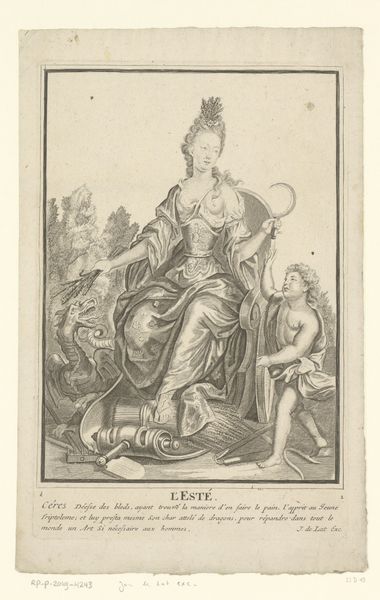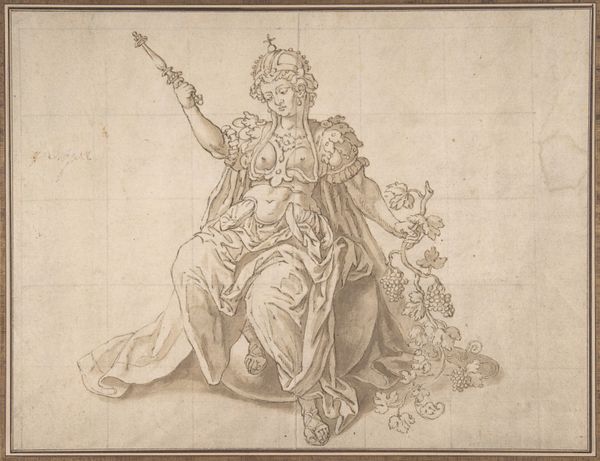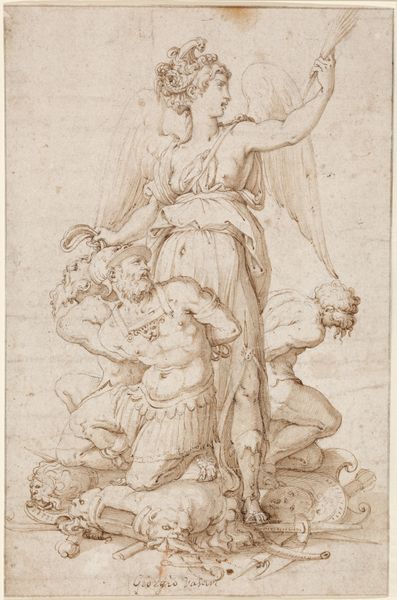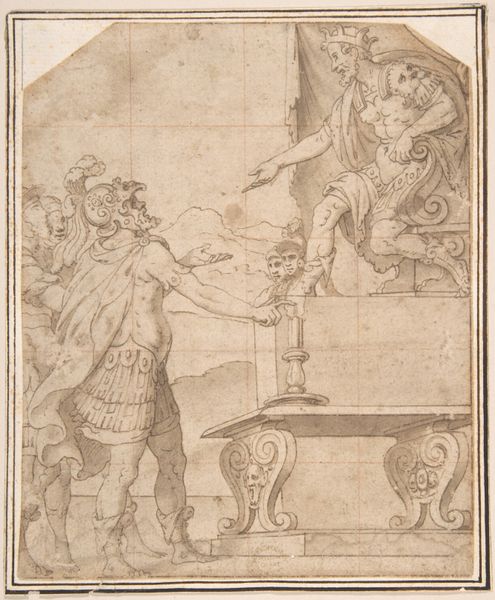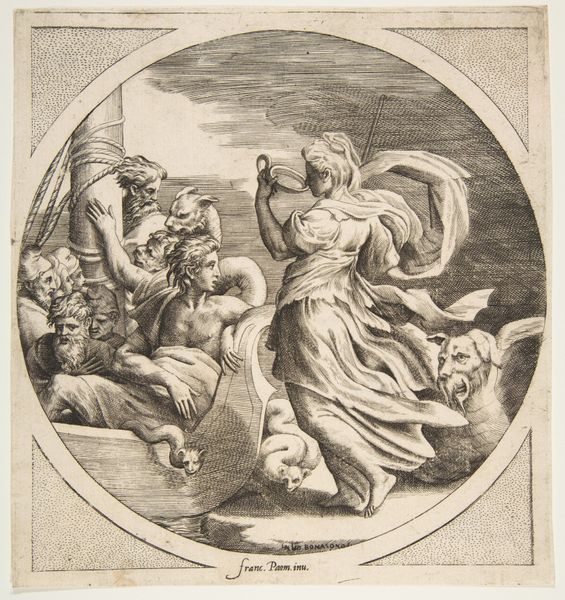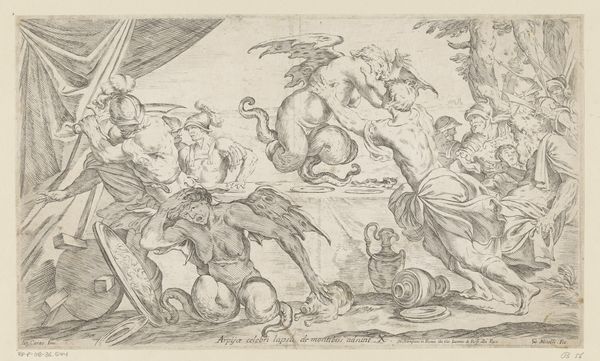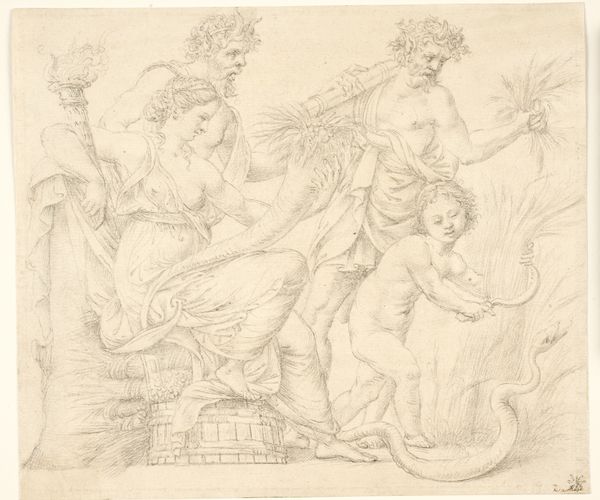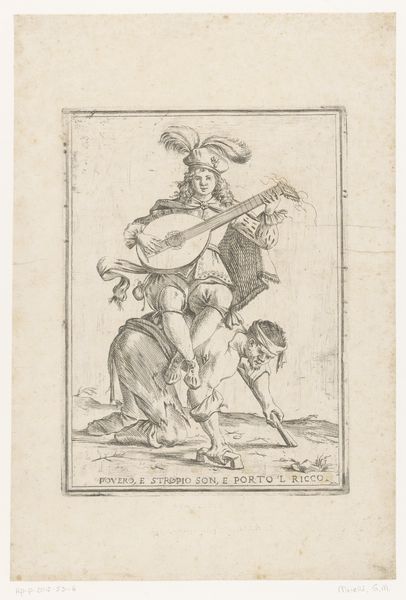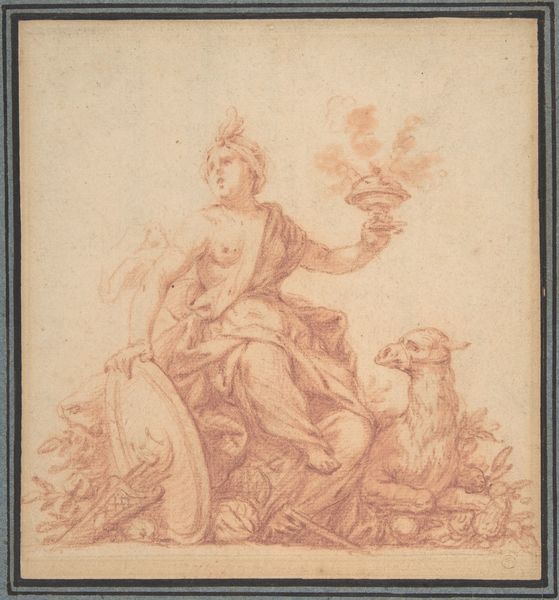
drawing, print, paper, ink
#
portrait
#
drawing
#
allegory
# print
#
figuration
#
paper
#
11_renaissance
#
ink
#
pencil drawing
#
orientalism
#
history-painting
Dimensions: 9 1/4 x 12 in. (23.5 x 30.5 cm)
Copyright: Public Domain
Curator: Welcome! Here we have an ink drawing from somewhere between 1500 and 1600. It's called "Allegory of Asia, from 'The Four Continents.'" It's at the Met, though the artist remains anonymous. What's your take on it? Editor: Oh, immediately, it feels like a beautiful dream…or maybe a very stylized history lesson? The sepia tones give it an old-world vibe, almost like a faded tapestry. And the figure—that serene woman riding a camel…she's got such a sense of composed majesty! Curator: Indeed. Note how the artist employs linear perspective and shading to create a sense of depth, while adhering to certain conventions typical of allegorical representations in Renaissance art. The paper's very materiality is crucial; its texture affects how light is reflected, impacting our perception. Editor: You're right, it's really a showcase of masterful technique. I notice the details in her elaborate costume—each fold of fabric, each bead. It's almost painstaking in its precision, and the animal’s muscles are sculpted in shading. And then you realize it is all a constructed performance, so to speak. This Asia seems exotic but packaged. Curator: Precisely. This image draws from, but also constructs, certain Renaissance ideas about Asia—its opulence and its "otherness," reflected in the inclusion of the camel and the incense. Consider also the semiotics: the incense might symbolize trade routes, spirituality, or even imperial ambition, while her regal bearing signifies power and authority. Editor: It's funny how perceptions change. I wonder what folks back then thought she represented…if they imagined lands far away, full of mystery and splendor… and what the woman herself might think about being immortalized like this on paper. It makes me feel how the "Orient" was made palatable for European consumption. Curator: Precisely. Thinking critically about how these historical works mediate culture helps us avoid passive reception. Editor: Well, after our conversation I am just left feeling how drawings like these really speak volumes about cultural exchange—or perhaps, more accurately, cultural projection. Curator: Agreed, I will now leave here seeing how art, through composition, color and, ultimately, through culture can take us all over the world.
Comments
No comments
Be the first to comment and join the conversation on the ultimate creative platform.

